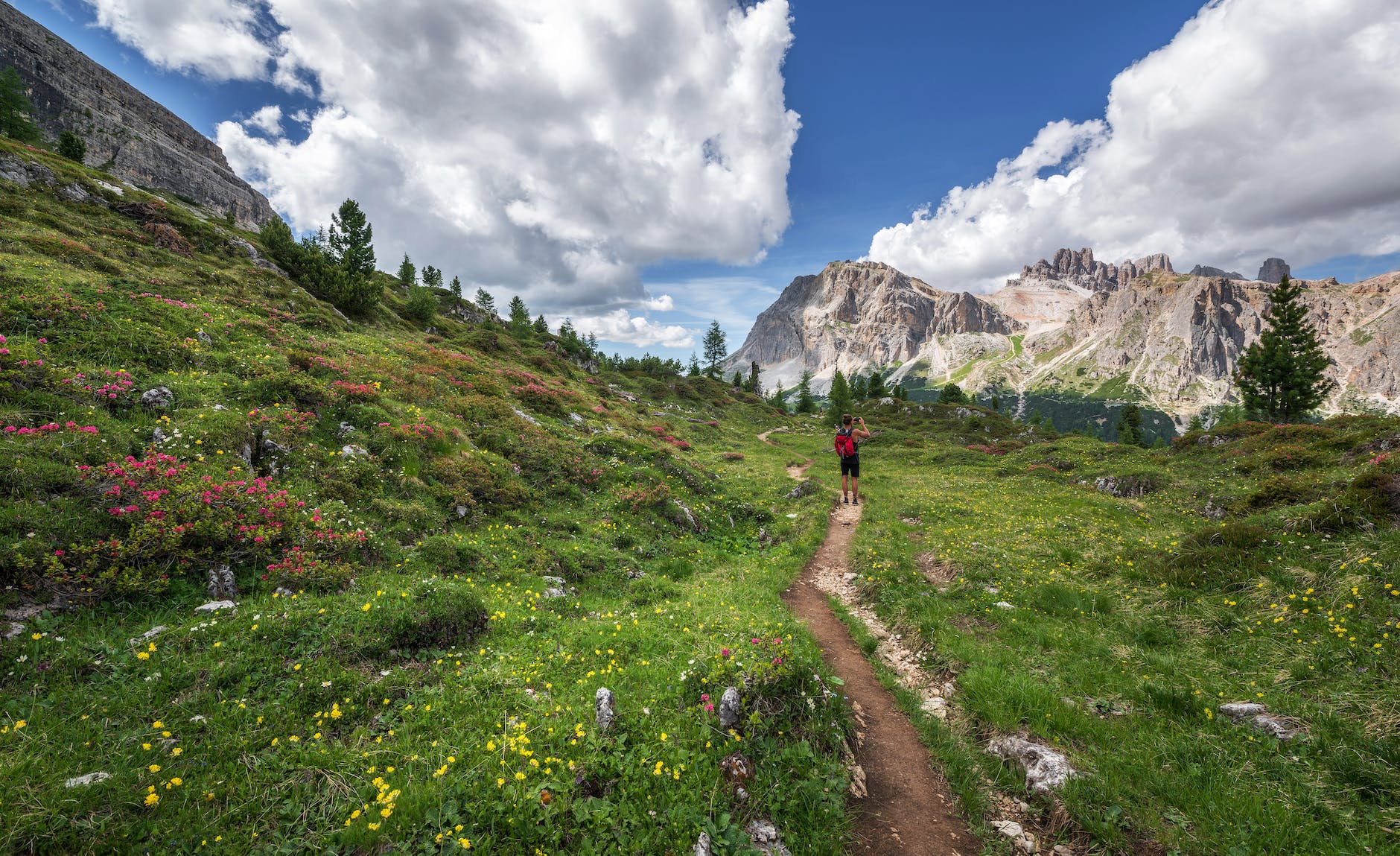It’s so much fun experiencing a hike with friends. The trails lend themselves to deeper conversations mixed with comfortable and relaxed silences as you soak up all that being outside has to offer.
You know what else is fun? Hiking on your own. You might be thinking, “yeah right Melissia, that actually sounds sucky.” Hear me out on this one.

There’s something about being on a trail without another person nearby that can be like meditating…..sure, you might be sucking in lots of air as you climb up a summit but trust me on this. You’re free to let your thoughts wander, dive into some self-reflection, or even practice visualizing what you want your future to look like. Just don’t close your eyes….we don’t need anyone tripping over a tree root.
Let me ask you a question and I want you to answer honestly.
Do you hesitate to go exploring or hiking on your own because you’re….well….alone…? And that makes you just a tad uncomfortable? Like you’re jumping off the high dive at a pool or launching yourself off a zipline platform for the first time?

You’re not alone my friend. But don’t let this fear prevent you from getting out and hiking or exploring to your heart’s content! THAT would be a shame.
All you need is a bit of knowledge to be prepared, some practice, and trust in yourself. Before you know it, you’ll feel comfortable AND confident to get out there even if you’re going solo.
Here are some tips to get you started.
1. Stick with what you know: Start with trails you’re already familiar with that aren’t quite so far away. Familiarity is comforting and you’ll get a boost of confidence by sticking to a tried and true route. Nothing close to home? Research local trails or national parks in your area that offer some alternative options and can be perfect for hiking on your own.

2. Share your plans: No, not on social media but with a friend or family member. Shoot someone a quick text or give your bestie a call before heading out. Let them know where you’re going, how long you expect to be gone, and what time you’ll check back in with them. This way, if something goes wrong, someone will know to look for you and can notify the authorities if necessary.
3. Check the weather forecast: I’m pretty sure Idaho isn’t the only place people say, “don’t like the weather now? Wait 5 minutes and it’ll change.” Weather conditions can make or break your hiking experience and safety. Just check the weather forecast so you’re prepared for changing conditions. If the forecast looks too sketchy for your comfort level, listen to yourself and reschedule your hike.
4. Pack the essentials: A well-packed backpack is crucial for peace of mind and a successful solo hike. Carry the following essentials and know how to use them.
- Navigation tools: Map, compass, and/or GPS device. And know how to use them.
- First aid kit: Include the basics like bandages, antiseptic ointment, pain relievers, and any necessary personal medications. I also throw in moleskin (for blisters) and some foot glide just in case.
- Safety gear: Whistle, headlamp, bear spray, matches, and a multi-tool or knife.
- Water and food: Carry enough water to stay hydrated….2 liters or more. I have a daypack with a bladder that keeps my water nice and cool and I can just carry it on my back. Pack some fruit, nuts, or even baby food pouches….yep, they work in a pinch!
- Extra clothing layers: Pack extra clothes for changes in weather and temperature. Include a rain jacket, hat, extra socks, and gloves.
- Shelter: Depending on the length of your hike and the trail’s remoteness, consider carrying a lightweight emergency shelter like a bivy sack or a space blanket.
- Communication devices: Carry a fully charged cell phone, but be aware that signal coverage is probably limited in remote areas. I always carry my Garmin inReach that sends my GPS location with any emergency text I may need to send.
- Other essentials: Sunscreen, chapstick, bug spray, hiking poles, a camera (this is my own essential), and a trash bag to pack out any trash you find along the way.
REI has a great article that goes into more detail about how to use some of these items – like how to read a paper map. Definitely worth learning!

5. Wildlife: Watch animals from a safe distance and avoid feeding or approaching them. Know what kinds of animals you might happen upon and what to do if you see them. In my opinion, just being aware of your surroundings is key. I like to make some noise so animals hear me coming too. Don’t let this scare you. Of course animals are out there but they usually are more scared of you and stay away.
6. Trust your gut: If something feels off, trust yourself. If something or someone makes you uncomfortable, it’s ok to turn around. For this reason, I never wear earbuds because I want to hear what’s going on around me.
Hiking on your own is empowering and can bring you such peace. I always feel reenergized and more focused afterward. So – plan YOUR solo hike using these tips as a starting point. I’ll be over here cheering you on!

Check out some of our other posts if you’re interested in learning more about respecting wildlife, Leave No Trace, or some hiking in Sedona (one of my favorite places to hike!)
If you have questions or want to share your experiences hiking on your own with me, drop me an email at melissia@idahovantasticvoyages.com.
